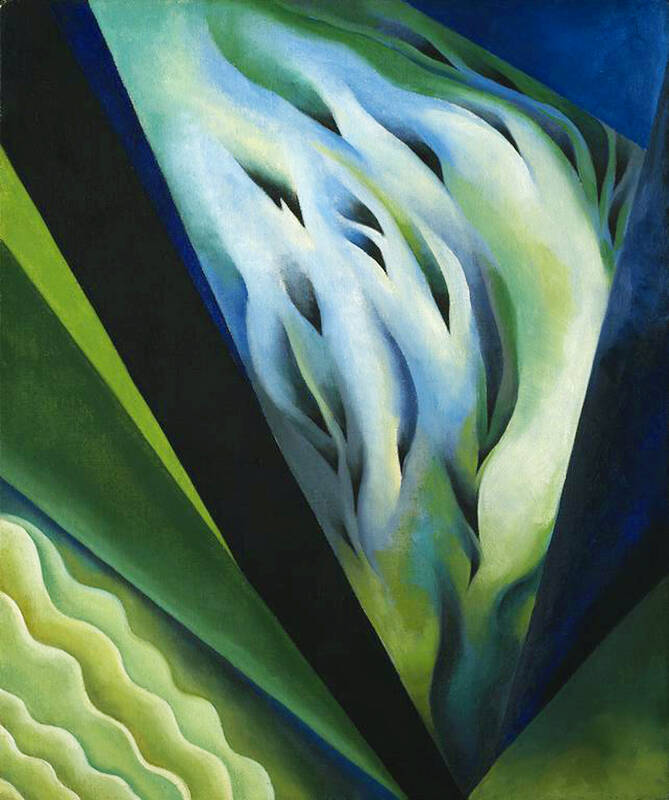It was a relatively promising start for gender equality when London’s Royal Academy of Arts was set up in 1768, with two women artists included among its 40 founding members.
But that was a false dawn — it would not be until the 1930s that another woman was elected a full member of the Academy.
While a few big names — Frida Kahlo, Georgia O’Keeffe, Alice Neel, Tracey Emin — give the impression that the art world has opened up since then, the Western canon remains dominated by men.

Photo courtesy of Wikimedia Commons
Among the 18 leading museums in the US, 87 percent of works are by men, according to the Public Library of Science. The Prado in Madrid has 335 works by women out of 35,572 — less than one percent — and only 84 are on public display.
‘HISTORICAL MISOGYNY’
Attitudes are changing. The Prado held a women-only exhibition in 2020 which highlighted its “historical misogyny,” in the words of curator Carlos Navarro.
Serbian performance artist Marina Abramovic will be the first woman to get a solo show that takes over all the main galleries of the Royal Academy next year. Increasing the share of overall works is tougher for museums that focus on the distant past — at least, that is the excuse of the Louvre in Paris, whose paintings stop at 1848, and include just 25 women among 3,600 artists.
But at Britain’s Tate, there has been scope for improvement.
Only five percent of its pre-1900 collection is by women, but this rises to 20 percent for artists working after 1900, and 38 percent for those born after 1965.
“With each rehang at each of Tate’s four galleries, the gender balance improves,” said Polly Staple, head of Tate’s British Art collection. “When Tate Modern opened its new displays in 2016, half of all the solo displays were dedicated to women artists, and this balance has been maintained ever since.”
As for private buyers, change has also been slow.
“Today, all museums pay attention to equality, the number of solo exhibitions for women artists is increasing... but in reality they remain largely under-represented in auction houses,” an art market insider said, requesting anonymity.
But with women increasingly welcomed into art courses from the late 20th century onwards, the tide is turning here, too. The report for this year by market-tracker Artprice found that women accounted for eight of the 10 best-selling artists under the age of 40.
‘THE WHOLE STORY’
It is not enough to blame the past, argues Katy Hessel, author of the recent The Story of Art Without Men. Women artists, such as Italy’s Artemisia Gentileschi (1593-1656) or Flemish painter Clara Peeters, were “known during their lifetime but have been erased over the centuries”, she said.
Unearthing these forgotten names has been hugely popular. Her podcast, The Great Women Artists, has more than 300,000 subscribers.“Imagining that a woman could invent something remained an anthropological taboo for a very long time,” said Camille Morineau, who founded research group Aware (Archives of Women Artists, Research and Exhibitions), to gather data on the topic. As curator at the Centre Pompidou in Paris in 2009, she hung nothing but female artists from its collection for two years, “to prove there were enough of them in the museum reserves to tell the whole story of 20th- and 21st-century art.”
New avenues of (re)discovery are still to come, added Hessel, highlighting Algeria’s Baya or Singapore’s Georgette Chen, as the sort of non-Western names who have “never really been part of our history.”

In the March 9 edition of the Taipei Times a piece by Ninon Godefroy ran with the headine “The quiet, gentle rhythm of Taiwan.” It started with the line “Taiwan is a small, humble place. There is no Eiffel Tower, no pyramids — no singular attraction that draws the world’s attention.” I laughed out loud at that. This was out of no disrespect for the author or the piece, which made some interesting analogies and good points about how both Din Tai Fung’s and Taiwan Semiconductor Manufacturing Co’s (TSMC, 台積電) meticulous attention to detail and quality are not quite up to

April 21 to April 27 Hsieh Er’s (謝娥) political fortunes were rising fast after she got out of jail and joined the Chinese Nationalist Party (KMT) in December 1945. Not only did she hold key positions in various committees, she was elected the only woman on the Taipei City Council and headed to Nanjing in 1946 as the sole Taiwanese female representative to the National Constituent Assembly. With the support of first lady Soong May-ling (宋美齡), she started the Taipei Women’s Association and Taiwan Provincial Women’s Association, where she

Chinese Nationalist Party (KMT) Chairman Eric Chu (朱立倫) hatched a bold plan to charge forward and seize the initiative when he held a protest in front of the Taipei City Prosecutors’ Office. Though risky, because illegal, its success would help tackle at least six problems facing both himself and the KMT. What he did not see coming was Taipei Mayor Chiang Wan-an (將萬安) tripping him up out of the gate. In spite of Chu being the most consequential and successful KMT chairman since the early 2010s — arguably saving the party from financial ruin and restoring its electoral viability —

It is one of the more remarkable facts of Taiwan history that it was never occupied or claimed by any of the numerous kingdoms of southern China — Han or otherwise — that lay just across the water from it. None of their brilliant ministers ever discovered that Taiwan was a “core interest” of the state whose annexation was “inevitable.” As Paul Kua notes in an excellent monograph laying out how the Portuguese gave Taiwan the name “Formosa,” the first Europeans to express an interest in occupying Taiwan were the Spanish. Tonio Andrade in his seminal work, How Taiwan Became Chinese,